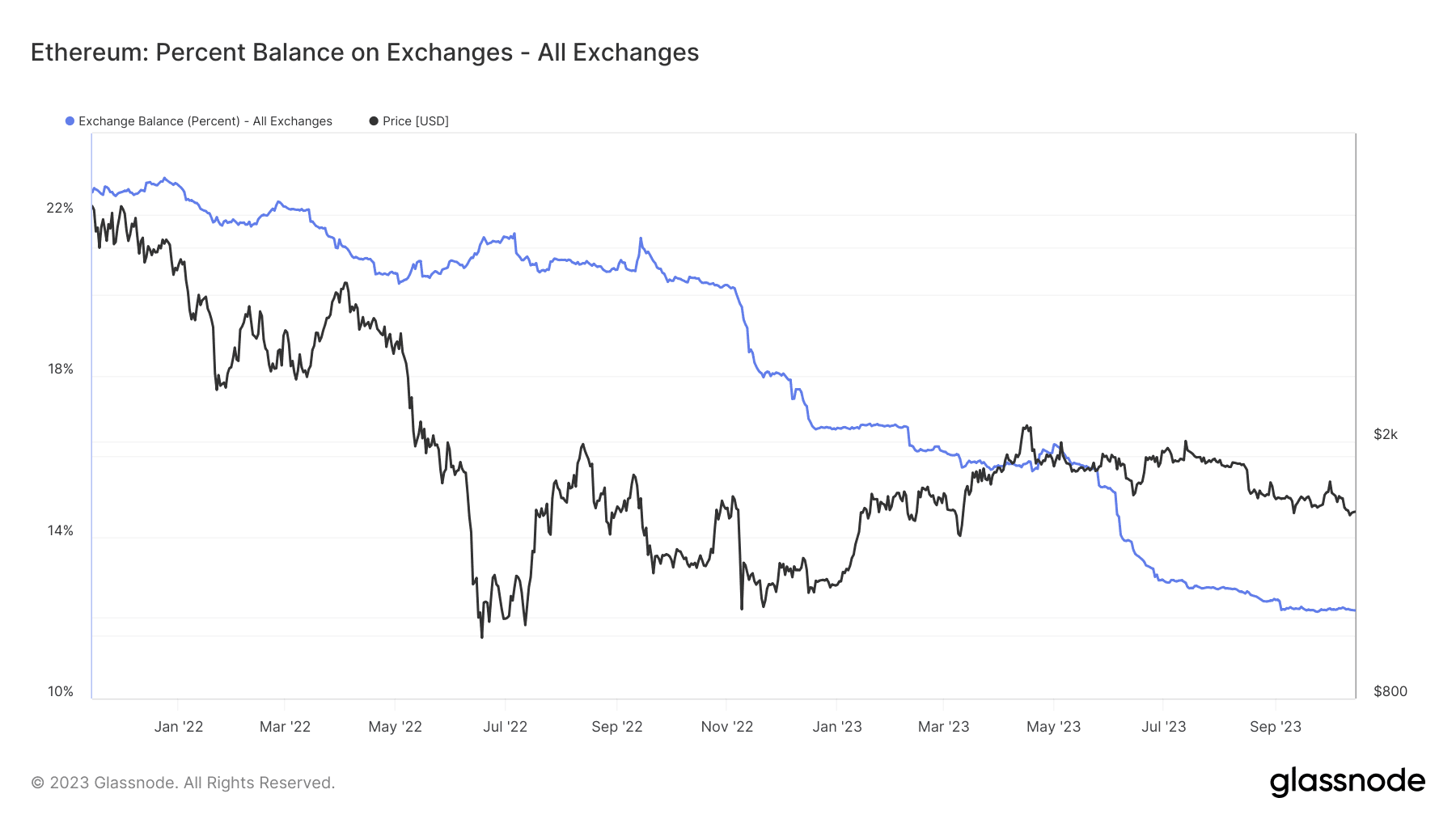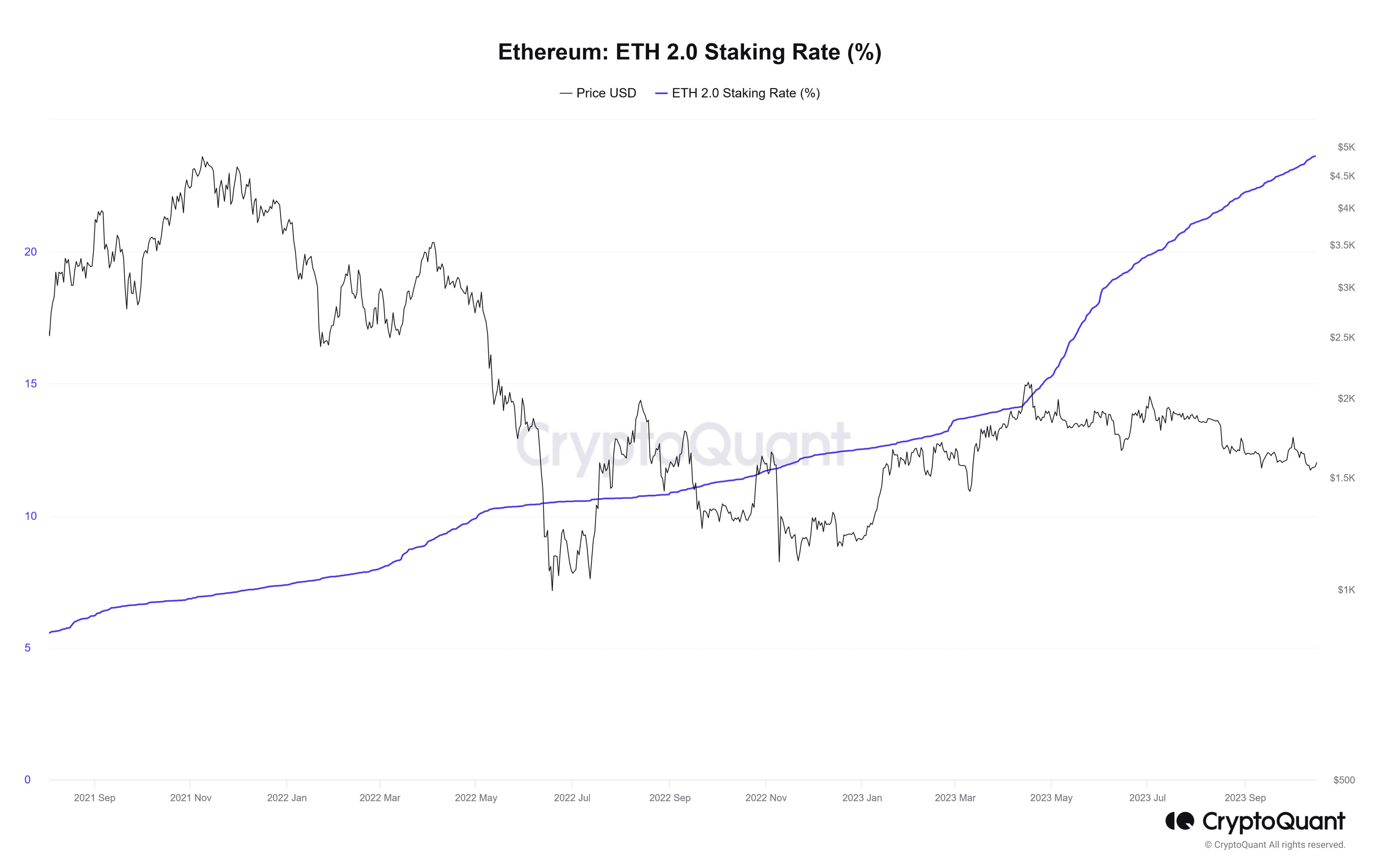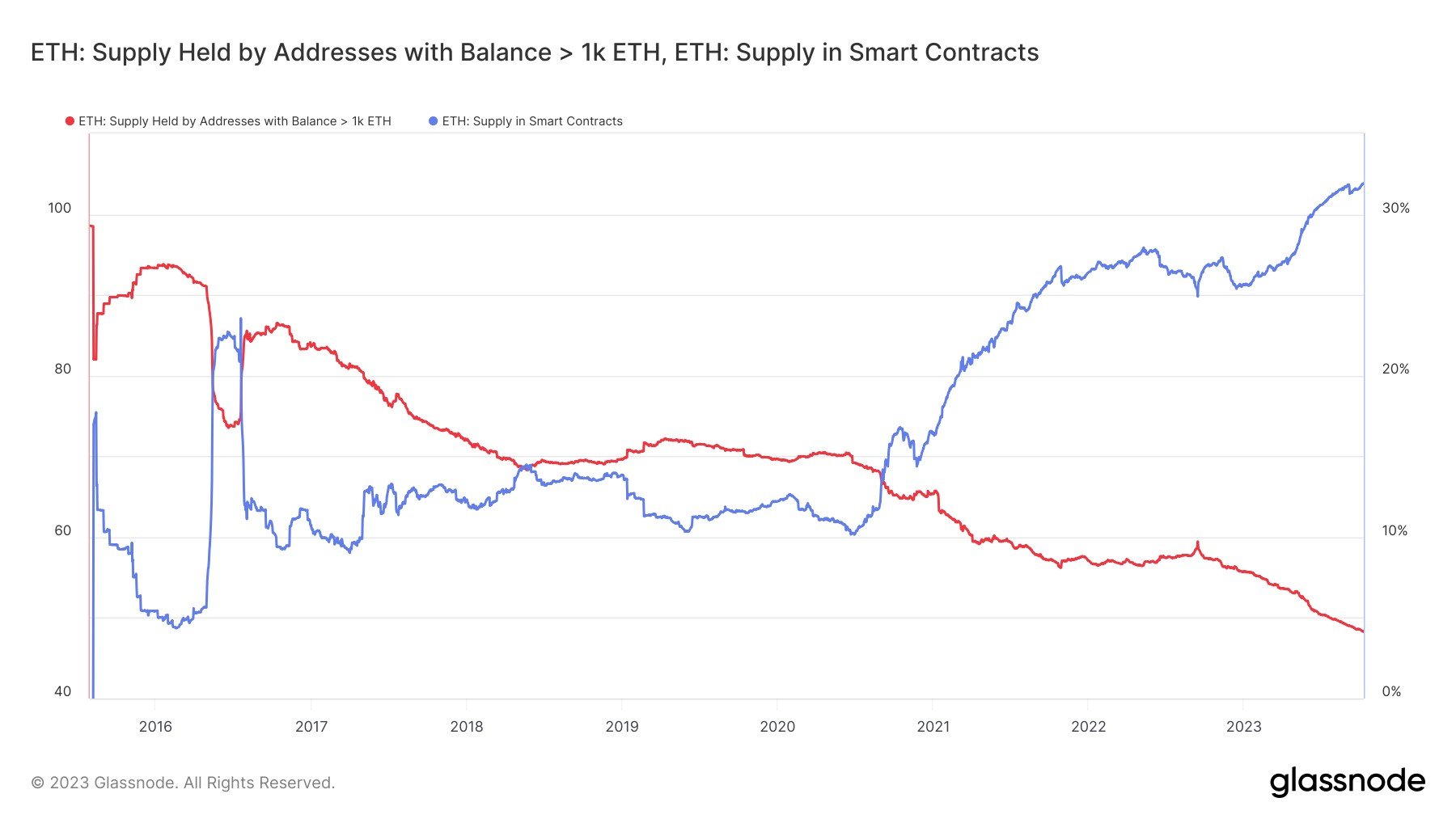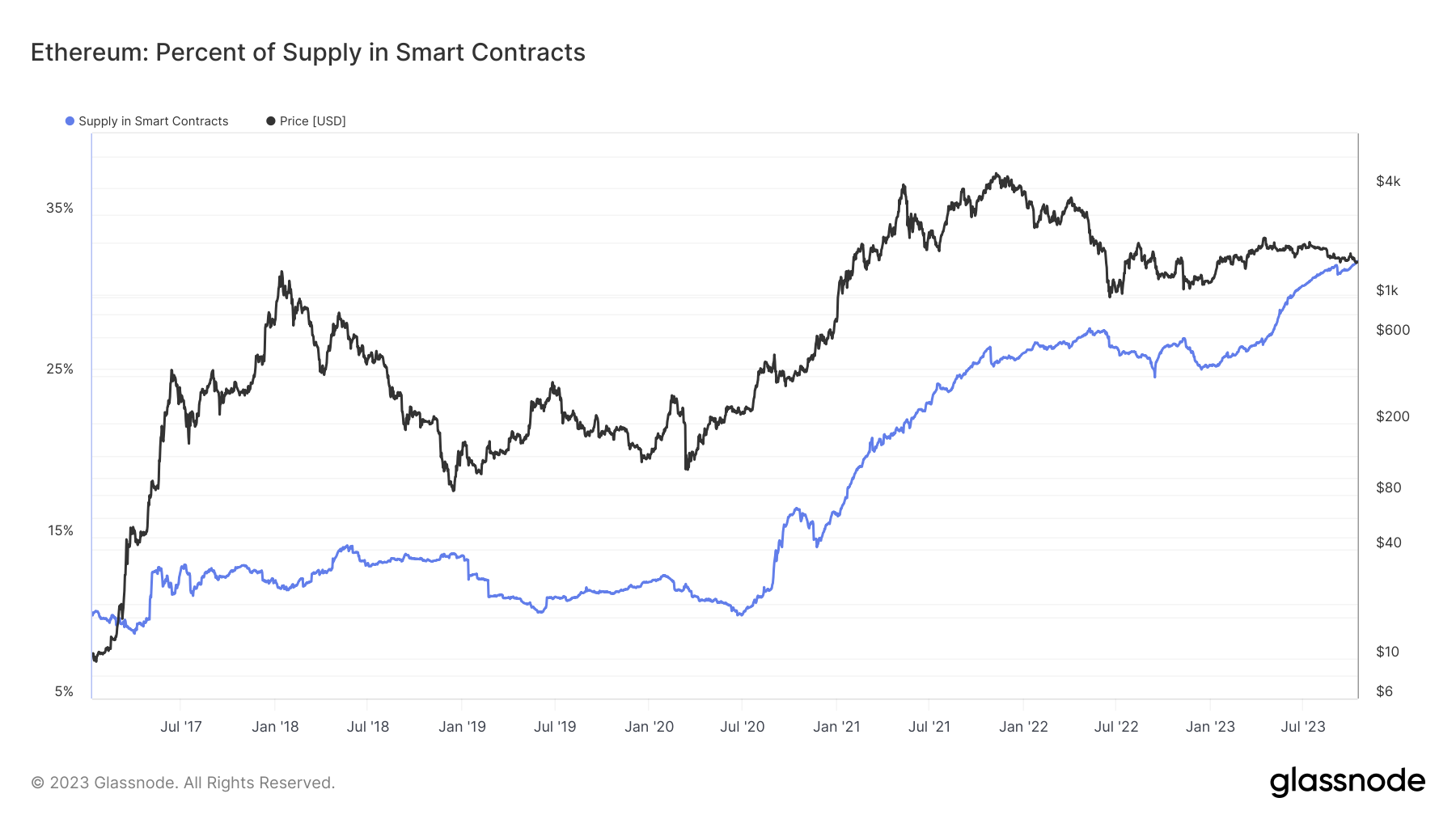Data from Glassnode show that around 32 percent of all Ethereum is now locked in smart contracts – more than ever before.
A main reason for this development is that more and more investors are withdrawing their ETH from centralized crypto exchanges to use it in the Ethereum ecosystem, especially in staking. The following graphics from Glassnode and CryptoQuant impressively illustrate this development.

The percentage of the total amount of Ethereum in circulation on centralized crypto exchanges has fallen from over 21 percent to around 12 percent at the time of going to press since the merge on September 15, 2022. During the same period, the staking rate increased, according to CryptoQuantfrom 11.61 percent to almost 24 percent.

The more ETH locked in smart contracts through staking or other Decentralized Finance (DeFi) applications, the lower the amount of ETH available on the market.
Bullish development for Ethereum
This, in turn, essentially means that the supply of ETH available for sale has become increasingly scarce over the past few months. From a fundamental perspective, this development can be viewed as bullish for Ethereum.
Read too

In fact, the basic principles of supply and demand teach us that when the supply of a good decreases and demand remains constant or even increases, the price of that good will tend to increase. Taking into account the fact that more and more Ether is locked in smart contracts and a constant or increasing demand for ETH, this could lead to an increase in the ETH price in the future.
What do whales have to do with the increase in ETH in smart contracts?
Ethereum whales, particularly those holding more than 1,000 ETH, have declined sharply since 2020, according to a chart from Glassnode. But a closer look reveals that many of these whales most likely haven’t actually sold. Instead, they transferred their ETH into smart contracts, primarily for staking. The following graphic from Glassnodeillustrates this development impressively.

While the number of Ethereum whales holding at least 1,000 or more Ether has continued to decline, the number of ETH in smart contracts has risen sharply. Glassnode’s data showing whales’ Ethereum holdings (red) do not take into account the ETH (blue) of these whales locked in smart contracts and it therefore seems very likely that most of these whales will continue to hold on to their ETH – but in the form of staked ETH.
This might also interest you
